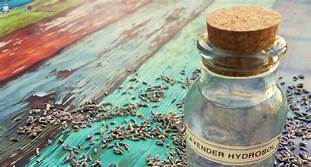







Home Distillation
Home distillation kits are becoming the rage. This is happening both for the fun experience of the process and because people are moving from cheaper commercial oil to expensive organic and authenbtic oil. It is natural to assume that you can make your own oils, and there is a certain cachet to distillation.
However, as pointed out earlier, not everyone makes great oil, and some plant materials contains so little oil that even a big home still is too small to produce usable quantities of plants like chamomile, rose, and angelica. However, home stills will produce hydrosol and can easily be used for this purpose.
Generally speaking, hydrosols are of better quality when essential oil is produced in the distillation process. If you are not getting oil, it means one of two things. First, the oil is not being adequately extracted from the plants or is being lost during the process.
Remedying this will require modifications to the still, steam source, or distillation parameters. Second, the oil is all in solution in the hydrolate. Now, depending on how much you want the oil, this may or not matter to you. Although there is never much oil in solution, it usually averages around 0.05 to 0.2 milliliter per litre.
This can add up to a significant amount over several liters of hydrolate, and for this reason most home stills cohobate the waters. If you want your hydrosols to have maximum therapeutic value, you should not cohobate, but you will lose oil yield as a result.
A few years ago I rigged up a home distiller for hydrosol; whenever I processed oregano there was not a drop of oil to be seen, while sage and other plants, produced both lovely oil and water. The Oregano hydrosol was one of the strongest i ever had and I believe that was because of the quantity of the oil in suspension.
Remember also that we do not all live in the right climate for certain oil-bearing plants . Rose geranium, for instance, is African in origin, and although it will grow well ouside in northern summers, it does not produce the same wonderful aroma. And, of course, we don't all have cinammon trees in our yards. The home distillation enthusiast must be prepared for surprises and lots of experimentation.
Reference: Hydrosols: The Next Aromatherapy: Suzanne Catty
Articles - Most Read
- Home
- What are Hydrosols
- What are Hydrosols-2
- The Monographs
- How to Make a Hydrosol
- Table of Common Latin Names and pH Values - F - O
- Distilled or Extracted Specifically For Therapeutic Use - 3
- What isn't a Hydrosol?
- Kurt Schnaubelt
- Table of Common Latin Names and pH Values - P - S
- Wholly Water!
- Blue Babies
- Mature Skin
- Supply and Demands
- Recipes Alpha F
- Hydrosols In The Marketplace
- Hemorrhoids
- Nelly GrosJean
- Chemicals: Friends or Foes?
- Water as Medicine
- Genitically Modified Plants
- Water Quality
- Influences
- The Educated Consumer
Articles-latest
- Comptonia peregrinal/Sweet Fern- pH 3.8
- Citrus clementine (fe) Clementine Petitgrain- pH 4.3-4.4
- Citrus aurantium var. amara (flos) /Neroli Orange Blossom-pH3.8-4.5
- Cistus ladaniferus/Rock Rose-pH 2.9-3.1
- Cinnamomum zeylanicum (ec) Cinnamon Bark-pH3.3
- Chamaemelum nobile/Roman Chamomile - pH 3.0-3,3
- Centaurea cyanus/Cornflower/Bachelor's Button-pH 4.7-5.0
- Cedrus atlantical/Cedarwood/Atlas Cedar-pH 4.1- 4.2
- Hydrosols -The PH - Anomalies
- Hydrosols- Establishing Shelf Life and Stability
- Boswellia carterii/FRANKINCENSE
- Asarum canadense/ Wild Ginger/Canadian Ginger
- Artemesia vulgaris / Artemesia
- ARTEMESIA DRACUNCULUS - TARRAGON
- Angelica archangelica / Angelica Root - Hydrosols
- The Key, or More Correctly, the pH - 2 - Hydrosols
- The Key, or More Correctly, the pH-Hydrosols
- The Hard pHacts - Hydrosols
- Calamus Root/Sweet Flag - ACORUS CALAMUS
- Yarrow - Achillea millefolium - Hydrosols
- Balsam Fir - Abies balsamea - Hydrosols
- How the Monograps are Presented
- The Three-Week Internal Protocol - Hydrosols
- Protocols - Hydrosols

